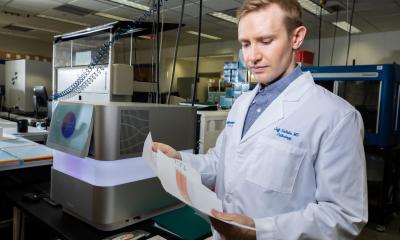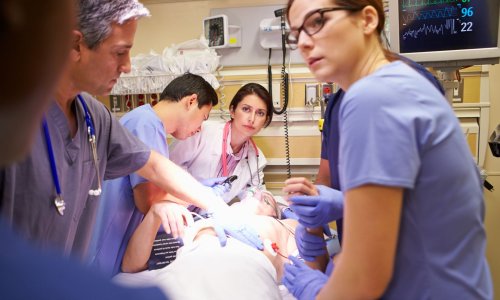Article • POCT
Evolutionary POCT
A growing number of clinical tests are being delivered in community hospitals with more patients receiving quicker, accurate diagnoses closer to home, without stays in acute hospital beds. Professor Daniel Lasserson, an Associate Professor in the Nuffield Department of Primary Care Health Sciences at Oxford University, shares the opinion that using point-of-caretesting (POCT) to facilitate high quality ambulatory care is a critical step towards defining hospital care in the future.
Report: Mark Nicholls

Photo: supplied
As a senior interface general practitioner (GP) within the Oxford University Hospitals NHS Trust, he is part of the medical team working on the Emergency Multidisciplinary Unit (EMU) at Abingdon Community Hospital and sees patients referred from GPs, community nurses or paramedics. Supported by nursing, physiotherapy, occupational therapy and social work teams, and with access to X-ray, the availability of POCT enables a comprehensive geriatric assessment for frail older patients with acute illness, picking up acute kidney injury or infections more quickly, as well as delivering and monitoring intravenous treatments on an ambulatory basis. ‘Patients do not need to have an acute hospital bed, because of point of care testing,’ he said. ‘I see POCT as a new safety envelope for out-ofhospital care.’
Making informed decisions through POCT in a community setting – and delivering acute therapies – can avoid admission to acute hospitals. ‘You can assess risk and treat the patient in a more precise way and much earlier than you would if you had to wait until they were transferred to hospital and had laboratory testing in the standard way.’
Dr Lasserson outlined the value of POCT, as an enabler of new care models, during the national meeting of the Association for Clinical Chemistry and Laboratory Medicine in Cardiff, Wales this June. He pointed out that it is still hospital practitioners conducting the assessment, but added: ‘They are practising in a different way; they have an acute ambulatory function, and POCT is enabling us to safely assess, treat and monitor response to treatment for patients with acute illness but without them going anywhere near a traditional acute hospital. ‘They are patients with acute medical needs, so we need to provide a credible alternative to the acute hospital pathway, but they can be managed out of hospital provided you have the backup of the diagnostics and multidisciplinary team. Our experience is that you can deliver that out of hospital, although the only way to do that with any accuracy and safety is by using POCTs.’
Nonetheless, patients with acute coronary syndrome, stroke and other serious conditions will still be admitted to the acute hospital for the onward treatment. Carried out by healthcare assistants, with results available within minutes and assessed by senior clinicians, such tests include clinical chemistry, sodium potassium, urea, creatinine, glucose, ketones, INR and troponin, blood gases and lactate, and haemoglobin.
The Abingdon service, established in 2010, has evolved and been refined, moving from a five- to seven-day service, with the scope of POCT also increasing ‘…because you can start delivering treatment in the acute care pathway without transferring patients to hospitals,’ Lasserson underlined. The evolution of this style of treatment sits with the Royal College of Physicians’ Future Hospital Commission vision of future hospital care within the NHS.
POCT benefits
Lasserson: ‘For hospitals POCT means they can manage more of their acute medical patients without using hospital beds and have patients treated at centres closer to their homes. For clinicians, it’s fantastic to see a patient and have all that information rapidly at your fingertips, to make a much earlier decision, start treatment earlier, and see an improvement before you send someone home. It means patients are not in hospital waiting for results.’ Patients get a ‘holistic assessment’, are seen in one visit and can clearly see how technology is working for them. ‘That reduces anxiety and, by seeing such great diagnostic backup, they have more confidence in the service.’ He believes that units such as this, ‘as they evolve around the country, will make a contribution to defining what a future hospital will be’.
Profile:
Daniel Lasserson is an Associate Professor in the Nuffield Department of Primary Care Health Sciences, University of Oxford; co-lead in Prevention and Population Care, NIHR Oxford Biomedical Research Centre; co-chair of the Measurement Workstream in NHS England’s Acute Kidney Injury Programme ‘Think Kidneys’; theme lead in the NIHR Oxford Diagnostic Evidence Collaborative, and Senior Trust General Practitioner in the Department of Geratology, Oxford University Hospitals NHS Trust. With research projects in acute ambulatory care and systems re-design, he aims to identify the optimal sustainable models for acute ambulatory care.
30.06.2015











